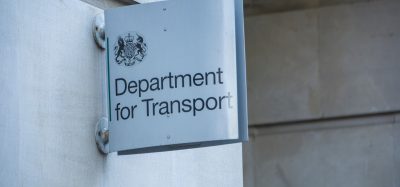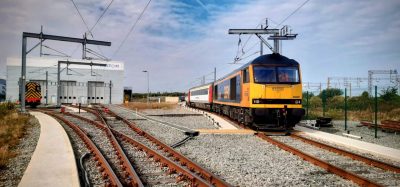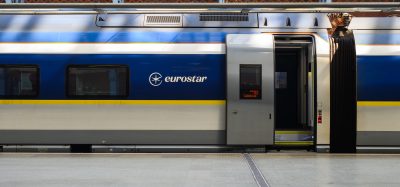HS1 complete UK’s first 5G-enabled augmented reality digital twin trial
Posted: 21 April 2022 | Elliot Robinson (Editorial Assistant - Global Railway Review) | No comments yet
HS1 have completed the first 5G-enabled augmented reality digital twin trial on UK railways, showing how the technology can reduce emissions and cut delays.
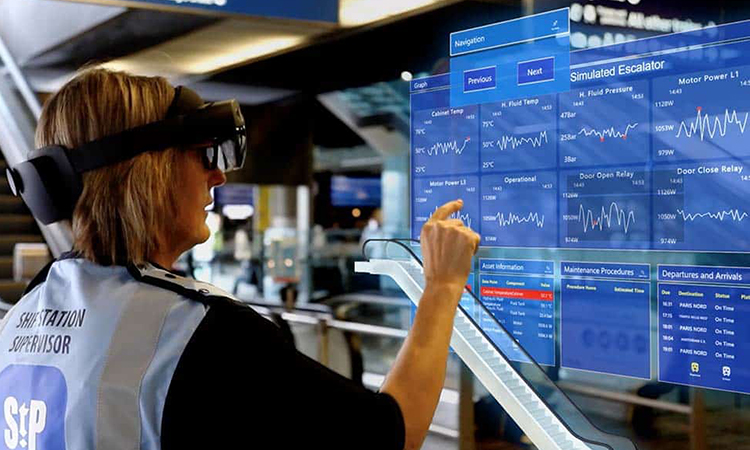

Credit: PAULEY - A St. Pancras International station employee using the digital twin technology
HS1 Ltd has completed the first 5G-enabled ‘augmented reality digital twin’ trial on UK railways, showcasing how the technology can be used to reduce emissions, cut train delays, and make the experience of passengers using the iconic St Pancras International station even more hassle free.
HS1, which owns and operates the UK’s only high-speed railway, developed a digital representation of the high-speed network including rail track, lifts, elevators and other parts of the line and stations during the 9-month project funded by Innovate UK.
Rail staff used ‘Hololens 2’ headsets to examine every facet of the railway in close detail, gaining a real-time understanding of how all elements were operating at any given time. This remote condition monitoring system enabled them to predict more effectively what maintenance work was needed on HS1’s physical infrastructure, including at St. Pancras International.
The trial clearly showed how the technology can be used to reduce emissions and to improve customers’ experience on the line and in stations. By being able to monitor the track remotely, HS1 saw a reduction in the number of in-person track inspections, which in turn increased safety and reduced the resources needed for inspections and helped cut emissions on the railway.
The monitoring of track also showcased the potential to improve journeys, as potential maintenance or repairs work can be spotted well before they impact services. This highlighted how the digital twin system could be used to potentially reduce the number of delays trains face due to faulty or failing assets in the future.
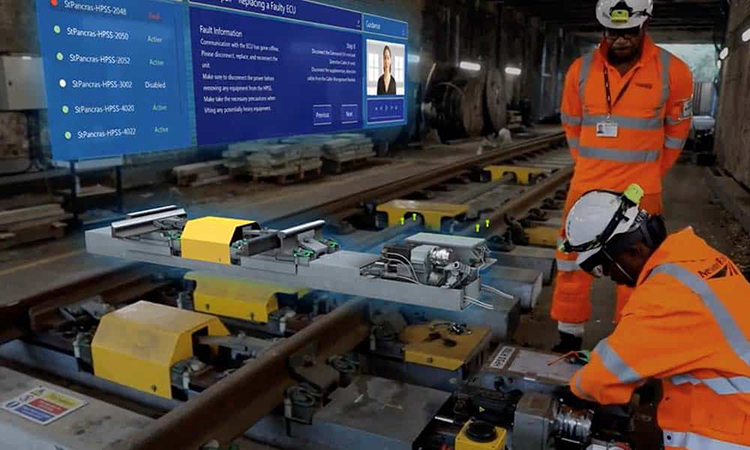

Credit: PAULEY – Training taking place by using the digital twin
“Innovation is at the heart of what we do at HS1 and we are proud to have carried out this successful trial of technology, which has the potential to improve people’s experiences of the railways and drive productivity within the system,” Dyan Crowther, CEO of HS1 Ltd, said. “This trial demonstrates where HS1 can become more sustainable and drive better outcomes for all of our stakeholders.”
Through the monitoring of lifts and elevators in the station, the trial showed how a digital twin system can help spot problems with pieces of infrastructure more effectively and without routine inspections. This allows maintenance and repairs to be carried out more efficiently, reducing the chances of assets being taken out of operation simultaneously, and in turn improving the passenger experience, especially for those with accessibility needs for whom the use of lifts is imperative for easy access to all parts of the station.
The trial also improved the efficiency and safety of staff training as employees were able to examine parts of the system digitally rather than on site, allowing them to address faults in a more controlled environment. HS1 Ltd have said that they will now investigate ways of rolling this whole system approach out further, building on the environmental, safety and customer benefits of the trial.
A video featuring the digital twin trial in action can be found below.
Stay Connected with Global Railway Review — Subscribe for Free!
Get exclusive access to the latest rail industry insights from Global Railway Review — all tailored to your interests.
✅ Expert-Led Webinars – Gain insights from global industry leaders
✅ Weekly News & Reports – Rail project updates, thought leadership, and exclusive interviews
✅ Partner Innovations – Discover cutting-edge rail technologies
✅ Print/Digital Magazine – Enjoy two in-depth issues per year, packed with expert content
Choose the updates that matter most to you. Sign up now to stay informed, inspired, and connected — all for free!
Thank you for being part of our community. Let’s keep shaping the future of rail together!
Related topics
Augmented Reality (AR), Digital Twins, Digitalisation, Passenger Experience/Satisfaction, Safety, Sustainability/Decarbonisation



